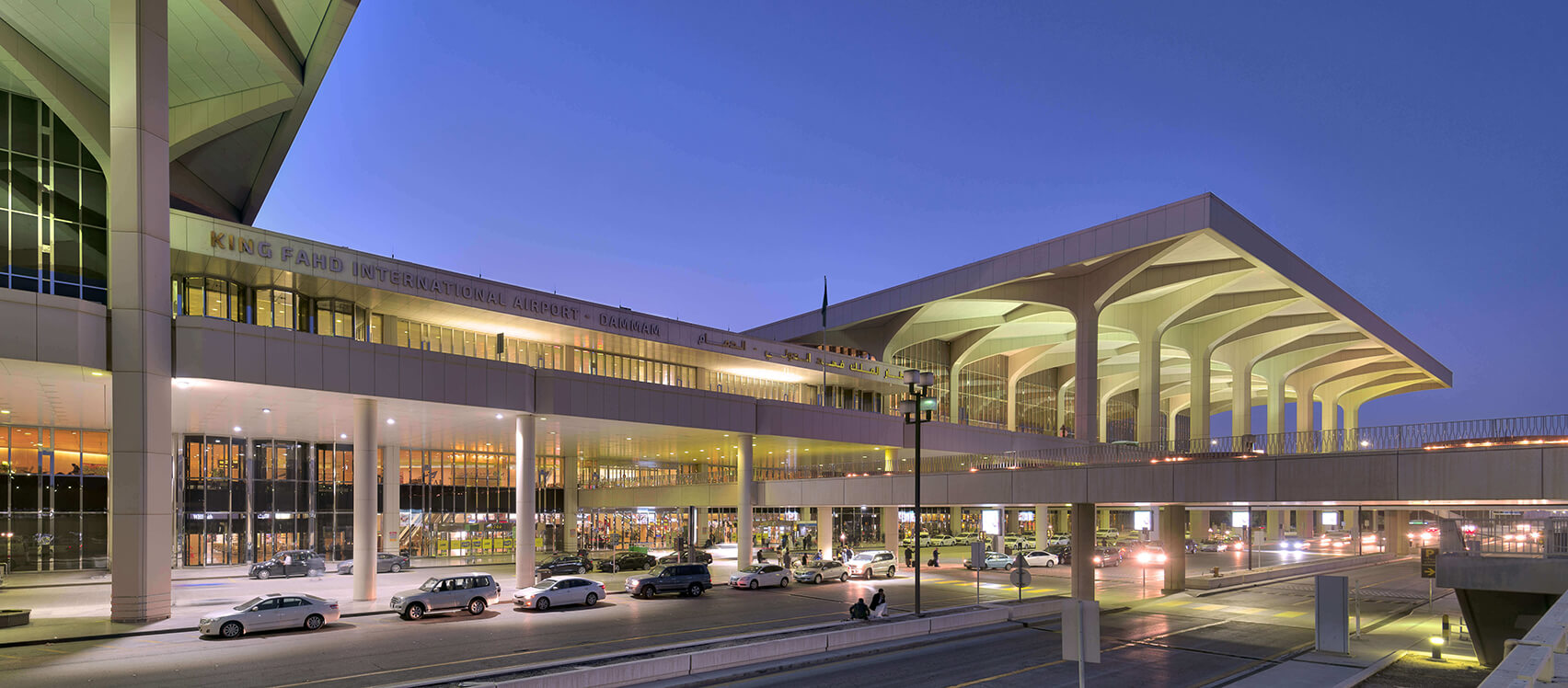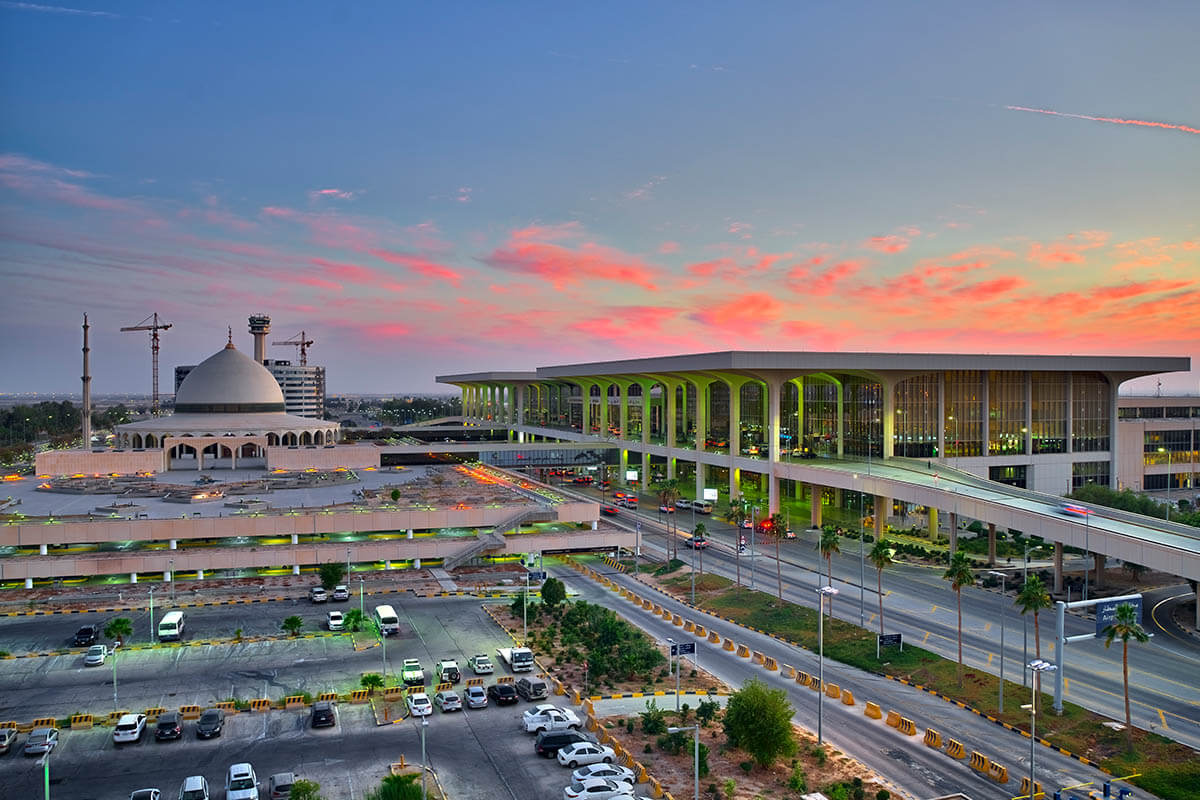In an era where air travel has become the norm, airports have grown in numbers and size to accommodate the ever-increasing influx of passengers.
Among these giants, one stands head and shoulders above the rest: Saudi Arabia’s King Fahd International Airport. Spanning a staggering 780 sq km (about 300 sq mi), King Fahd International Airport is not just an airport; it’s practically a city.
The Guinness Book of World Records acknowledges this airport as the largest of its type. To put this into perspective, it surpasses the entire area of Bahrain, a neighboring country boasting three airports. It also dwarfs iconic cities like Paris, boasting an area eight times bigger than the French capital.
The magnitude of King Fahd International Airport becomes even more apparent when considering its capacity to accommodate several small Indian cities, each typically around 121 square kilometers in area.
Its sheer size also eclipses other major airports like Denver International Airport (DEN) (the second-largest airport) and Dallas Fort Worth International Airport (the third-largest airport) by a significant margin.
The Saudis aren’t content with just holding the title of the largest airport. They’re already looking towards the future with plans underway for a new six-runway airport on the King Fahd International site by 2030, a testament to their commitment to staying ahead in the aviation industry.

Named in honor of King Fahd ibn Abdulaziz, who ruled Saudi Arabia for 23 years until he died in 2005, the airport near Dammam has become a pivotal hub for air travel in the region.
Operating 37 airlines serving 43 destinations, King Fahd International Airport (DMM) is well-connected to destinations across the Middle East and the Indian Subcontinent.
Moreover, the airport facilitates international connectivity with a handful of widebody flights to Europe, operated by prominent carriers like Lufthansa and KLM, linking passengers to their respective hubs in Frankfurt (FRA) and Amsterdam (AMS).
In addition to its extensive network, King Fahd International Airport operates one of the world’s shortest commercial flights, spanning just 47 miles (76 kilometers) to Bahrain International Airport (BAH).
This route, serviced by Flynas and Gulf Air with up to 28 weekly flights, has an average block time of a mere 45 minutes from gate to gate.
Largest Airport In The World
Since its inception in 1999, King Fahd International Airport (KFIA) has stood as a symbol of Saudi Arabia’s commitment to global connectivity and excellence in aviation.
Over the years, KFIA has evolved into a bustling hub, facilitating seamless travel experiences for millions of passengers annually while boasting state-of-the-art facilities and infrastructure.
At the heart of KFIA lies its expansive terminal complex, a marvel of modern architecture and functionality. Equipped with a plethora of amenities, including duty-free shops, restaurants, prayer rooms, and business facilities, the terminal complex caters to the diverse needs of travelers.
The towering control tower, standing at a height of 80 meters (262 feet), oversees flight operations and ground movements with unparalleled precision, ensuring safety and efficiency.
One of the most crucial features of KFIA is its extensive runway system, consisting of two parallel runways, each exceeding 4,000 meters (13,123 feet) in length.

This strategic layout enables the airport to accommodate the world’s largest commercial aircraft, facilitating smooth operations even during peak hours. Such capabilities solidify KFIA’s position as a global aviation powerhouse, capable of handling the demands of modern air travel with ease.
In addition to its passenger terminals, KFIA boasts dedicated cargo facilities that play a crucial role in global trade and logistics. With extensive aprons, warehouses, and logistics centers, the airport serves as a vital conduit for air freight services. This facilitates the seamless movement of goods across continents.
While KFIA caters to millions of passengers annually, there is one area reserved for exclusive use: the Royal Terminal. This opulent facility, spanning 177,000 sq ft, is reserved for the country’s royal family, government officials, and official guests.
Nonetheless, despite its impressive size and capabilities, KFIA’s passenger traffic pales in comparison to some of the world’s busiest airports. KFIA currently handles only 10 million passengers annually, a fraction compared to major international airports like London Heathrow or Dubai International Airport.
However, Saudi Arabia has ambitious plans to increase KFIA’s capacity, aiming to accommodate up to 185 million passengers annually in the future.
Moreover, the airport once also welcomed the Antonov AN-225 Mriya in 2009 during a layover from Ukraine to Tanzania. Measuring 275 ft (84 mt) in length and boasting a wingspan of 288 ft (88 mt), Mriya held the title of the world’s largest aircraft.
- Contact the author at ashishmichel(at)gmail.com
- Follow EurAsian Times on Google News




